

Pushing Academics into Preschool Can Be Harmful
A comprehensive study finds significant drawbacks to pushing academics as early as in preschool. Researchers found that any initial academic gains were quickly erased, and children who attended academic-focused Pre-K were actually behind their peers in elementary and middle school. Another troubling finding was that students who experienced early academic pressure showed dramatic increases in behavioral issues later on. In Waldorf education, we focus on what is developmentally appropriate for each age group, understanding that preschool-age children especially need play, movement, and art, which are all critical to social-emotional health and future academic success.
This article was originally published by Anya Kamenetz on NPR.org
A top researcher says it's time to rethink our entire approach to preschool
Dale Farran has been studying early childhood education for half a century. Yet her most recent scientific publication has made her question everything she thought she knew.
"It really has required a lot of soul-searching, a lot of reading of the literature to try to think of what were plausible reasons that might account for this."
And by "this," she means the outcome of a study that lasted more than a decade. It included 2,990 low-income children in Tennessee who applied to free, public prekindergarten programs. Some were admitted by lottery, and the others were rejected, creating the closest thing you can get in the real world to a randomized, controlled trial — the gold standard in showing causality in science.
Farran and her co-authors at Vanderbilt University followed both groups of children all the way through sixth grade. At the end of their first year, the kids who went to pre-K scored higher on school readiness — as expected.
But after third grade, they were doing worse than the control group. And at the end of sixth grade, they were doing even worse. They had lower test scores, were more likely to be in special education, and were more likely to get into trouble in school, including serious trouble like suspensions.
"Whereas in third grade we saw negative effects on one of the three state achievement tests, in sixth grade we saw it on all three — math, science and reading," says Farran. "In third grade, where we had seen effects on one type of suspension, which is minor violations, by sixth grade we're seeing it on both types of suspensions, both major and minor."
That's right. A statewide public pre-K program, taught by licensed teachers, housed in public schools, had a measurable and statistically significant negative effect on the children in this study.
Farran hadn't expected it. She didn't like it. But her study design was unusually strong, so she couldn't easily explain it away.
"This is still the only randomized controlled trial of a statewide pre-K, and I know that people get upset about this and don't want it to be true."
Why it's a bad time for bad news
It's a bad time for early childhood advocates to get bad news about public pre-K. Federally funded universal prekindergarten for 3- and 4-year-olds has been a cornerstone of President Biden's social agenda, and there are talks about resurrecting it from the stalled-out "Build Back Better" plan. Preschool has been expanding in recent years and is currently publicly funded to some extent in 46 states. About 7 in 10 4-year-olds now attend some kind of academic program.
This enthusiasm has rested in part on research going back to the 1970s. Nobel Prize-winning economist James Heckman, among others, showed substantial long-term returns on investment for specially designed and carefully implemented programs.
To put it crudely, policymakers and experts have touted for decades now that if you give a 4-year-old who is growing up in poverty a good dose of story time and block play, they'll be more likely to grow up to become a high-earning, productive citizen.
What went wrong in Tennessee
No study is the last word. The research on pre-K continues to be mixed. In May 2021, a working paper (not yet peer reviewed) came out that looked at Boston's pre-K program. The study was a similar size to Farran's, used a similar quasi-experimental design based on random assignment, and also followed up with students for years. This study found that the preschool kids had better disciplinary records and were much more likely to graduate from high school, take the SATs and go to college, though their test scores didn't show a difference.
Farran believes that, with a citywide program, there's more opportunity for quality control than in her statewide study. Boston's program spent more per student, and it also was mixed-income, whereas Tennessee's program is for low-income kids only.
So what went wrong in Tennessee? Farran has some ideas — and they challenge almost everything about how we do school. How teachers are prepared, how programs are funded and where they are located. Even something as simple as where the bathrooms are.
In short, Farran is rethinking her own preconceptions, which are an entire field's preconceptions, about what constitutes quality pre-K.
Do kids in poverty deserve the same teaching as rich kids?
"One of the biases that I hadn't examined in myself is the idea that poor children need a different sort of preparation from children of higher-income families."
She's talking about drilling kids on basic skills. Worksheets for tracing letters and numbers. A teacher giving 10-minute lectures to a whole class of 25 kids who are expected to sit on their hands and listen, only five of whom may be paying any attention.
"Higher-income families are not choosing this kind of preparation," she explains. "And why would we assume that we need to train children of lower-income families earlier?"
Farran points out that families of means tend to choose play-based preschool programs with art, movement, music and nature. Children are asked open-ended questions, and they are listened to.
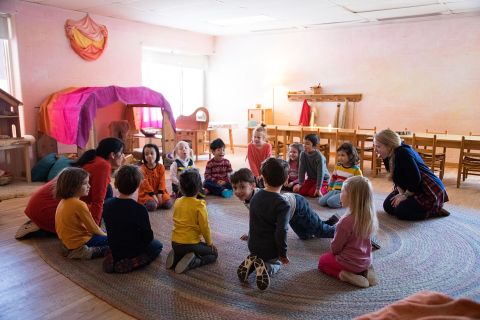
This is not what Farran is seeing in classrooms full of kids in poverty, where "teachers talk a lot, but they seldom listen to children." She thinks that part of the problem is that teachers in many states are certified for teaching students in prekindergarten through grade 5, or sometimes even pre-K-8. Very little of their training focuses on the youngest learners.
So another major bias that she's challenging is the idea that teacher certification equals quality. "There have been three very large studies, the latest one in 2018, which are not showing any relationship between quality and licensure."
Putting a bubble in your mouth
In 2016, Farran published a study based on her observations of publicly funded Tennessee pre-K classrooms similar to those included in this paper. She found then that the largest chunk of the day was spent in transition time. This means simply moving kids around the building.
Partly this is an architectural problem. Private preschools, even home-based day cares, tend to be laid out with little bodies in mind. There are bathrooms just off the classrooms. Children eat in, or very near, the classroom, too. And there is outdoor play space nearby with equipment suitable for short people.
Putting these same programs in public schools can make the whole day more inconvenient.
"So if you're in an older elementary school, the bathroom is going to be down the hall. You've got to take your children out, line them up and then they wait," Farran says. "And then, if you have to use the cafeteria, it's the same thing. You have to walk through the halls, you know: 'Don't touch your neighbor, don't touch the wall, put a bubble in your mouth because you have to be quiet.' "
One of Farran's most intriguing conjectures is that this need for control could explain the extra discipline problems seen later on in her most recent study.
"I think children are not learning internal control. And if anything, they're learning sort of an almost allergic reaction to the amount of external control that they're having, that they're having to experience in school."
In other words, regularly reprimanding kids for doing normal kid stuff at 4 years old, even suspending them, could backfire down the road as children experience school as a place of unreasonable expectations.
We know from other research that the control of children's bodies at school can have disparate racial impact. Other studies have suggested that Black children are disciplined more often in preschool, as they are in later grades. Farran's study, where 70% of the kids were white, found interactions between race, gender, and discipline problems, but no extra effect of attending preschool was detected.
Where to go from here
The United States has a child care crisis that COVID-19 both intensified and highlighted. Progressive policymakers and advocates have tried for years to expand public support for child care by "pushing it down" from the existing public school system, using the teachers and the buildings.
Farran praises the direction that New York City, for one, has taken instead: a "mixed-delivery" program with slots for 3- and 4-year-olds. Some kids attend free public preschool in existing nonprofit day care centers, some in Head Start programs and some in traditional schools.
But the biggest lesson Farran has drawn from her research is that we've simply asked too much of pre-K, based on early results from what were essentially showcase pilot programs. "We tend to want a magic bullet," she says.
"Whoever thought that you could provide a 4-year-old from an impoverished family with 5 1/2 hours a day, nine months a year of preschool, and close the achievement gap, and send them to college at a higher rate?" she asks. "I mean, why? Why do we put so much pressure on our pre-K programs?"
We might actually get better results, she says, from simply letting little children play.
The Value of an Unhurried Childhood
A recent New York Times article highlighted the importance of giving children an unhurried childhood, without an overpacked schedule of extracurricular activities and excessive homework. The pressure on Gen Z to excel at a young age has led to decreased mental health and increasing struggles at school. Waldorf Education takes a balanced approach, with plenty of time for children to play and explore, while also providing a joyful and well-rounded education that instills essential life skills, sparks a lifelong love of learning, and prepares them for a successful future.
This article was written by Shalini Shankar and originally published on July 9, 2021 in the New York Times
A Packed Schedule Doesn’t Really ‘Enrich’ Your Child
When the extracurricular-industrial complex came to a grinding halt last spring, parents were left scrambling to fill vast hours of unscheduled time. Some activities moved to remote instruction but most were canceled, and keeping children engaged became the bane of parents’ existence. Understandably, screens became default child care for younger kids and social lifelines for older ones.
As American society reopens, going back to our children’s prepandemic activities looks like an enticing way to reintroduce upper-elementary through high-school-age kids to the outside world. For parents with economic means, it’s tempting to return to a full slate of language classes, sports, music lessons and other extracurriculars — a guilt-free plan to keep kids busy with “enriching” activities while we get our jobs done.
But I suggest pausing before filling up their calendars again. We should not simply return children to their hectic prepandemic schedules.
Certainly, some amount of extracurricular activity can offer a welcome break from screens and help children nurture interests. But for Generation Z, the over-scheduling of extracurricular activities has been bad for stress and mental health and even worse for widening racial gaps. Moreover, as I learned when I conducted anthropological research for my book “Beeline: What Spelling Bees Reveal About Generation Z’s New Path to Success,” it no longer consistently improves the prospects of the white middle-class kids for whom it was designed.
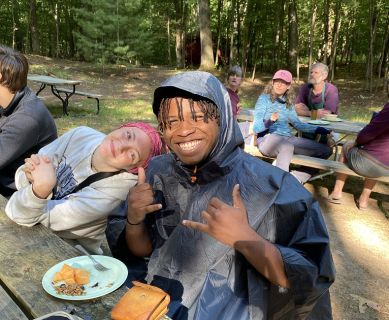 But what can parents do with our kids instead? The answer is simple, though not easy to carry out: We can teach them (and perhaps relearn ourselves) the value of unstructured time and greater civic participation.
But what can parents do with our kids instead? The answer is simple, though not easy to carry out: We can teach them (and perhaps relearn ourselves) the value of unstructured time and greater civic participation.
This does not mean we should quit our day jobs and devote ourselves instead to endless hours of building forts and playing games. Exposing children to sports, music, art, programming or dance certainly has benefits — including physical exercise, intellectual stimulation and fun — but there are also good reasons to give children time to be bored. Not least of these is it forces them to figure out a way to entertain themselves.
For many kids today, scheduled time and down time on their screens are the only states of being. Paradoxically, scheduled unstructured time could address this. Cooking, reading a book, art projects and neighborhood walks are unlikely to completely replace screens, but routinizing blocks of time for these self-sustaining activities each day or several times a week could introduce children and teenagers to new pleasures, and at the very least invite calmness.
Gen Z acutely feels the pressure to be accomplished at a younger age. As kids take on a wider range of challenging activities younger, a trend that began with millennials but has grown to steroidal levels, the criteria for standing out in the college admissions process have shot up accordingly. It’s no wonder kids are stressed out.
The Slacker Generation, an initially disparaging label that Gen Xers have reclaimed, did not have to build a childhood résumé brimming with skills, expertise and accolades to get into college. Now many of these former slackers are parents worried about whether their kids are doing enough to stay competitive in college admissions and the job market. Those who can afford it feel pressure to pad their kids’ résumés as much as they can. A 2019 survey found that more than a quarter of “sports parents” spent upward of $500 per month, with some spending over $1,000 and jeopardizing their retirement savings.
But it’s clear by now that all this expensive enrichment won’t ensure kids’ success. Despite middle- and upper-class millennials mortgaging their childhood to get into college and then toiling through early adulthood in unpaid internships, they are unable to acquire the levels of economic and social security still held by their baby boomer parents.
Perhaps that’s why Gen Z has shown astute awareness of the dangers of overwork, with some high-profile Zoomers demonstrating acts of radical self-preservation. The Gen Z tennis star Naomi Osaka, for example, recently chose to prioritize her well-being over her career’s demands when she dropped out of the French Open after officials fined her for declining to participate in its post-match news conferences. Gen Z seems to have accepted that no matter how much you love your job, your job won’t love you back. Their parents — Gen Xers and even older millennials — were late to this lesson, and if they learned it at all, it was often only when they hit a wall with burnout.
 Of course, preparing children for college and the job market is not the only goal of parents shelling out for guitar lessons or robot-making labs. Parents are also eager to expose their children to different ways of using their minds and bodies in the hope that they’ll discover passions that could become vocations, or simply lifelong joys. One passion that’s worth trying to instill is civic participation.
Of course, preparing children for college and the job market is not the only goal of parents shelling out for guitar lessons or robot-making labs. Parents are also eager to expose their children to different ways of using their minds and bodies in the hope that they’ll discover passions that could become vocations, or simply lifelong joys. One passion that’s worth trying to instill is civic participation.
As parents, we can reinforce the importance of caring beyond one’s own success. Taking your kids to volunteer or to protest injustices they see in the world are good ways to show them what it looks like to give back and replenish. The human and nonhuman connections they will make at food pantries and animal shelters can help kids cultivate empathy — itself a valuable skill for navigating life — while offsetting the anxiety footprint caused by today’s inflated standards for success.
It might feel counterintuitive to deny your children the leg up in life that many extracurriculars promise, but it’s worth examining that impulse too. The pandemic has exacerbated existing socioeconomic disparities, especially along racial lines. With widening wealth gaps, there will be even fewer opportunities to prioritize extracurricular activities for low-income kids. Rethinking the value of a packed calendar offers a concrete opportunity to narrow the racial and economic gaps between privileged and underprivileged kids.
Replacing video games with nature walks might not make you the most popular parent. Your kids may complain a little (or a lot) about losing some of their organized fun, since boredom is a feeling they’ve rarely experienced. But they’ll figure it out.
Unplugged and Having Fun!
A TECH-FREE SUMMER MIGHT BE THE BEST SUMMER EVER!
The Importance of Play
Take a minute to think of a joyful childhood memory when you were engaged in play. Perhaps from summer camp or somewhere else. Where were you? Who was there? What were you doing? Was a smartphone involved? OK, now fast forward to today. Do you see kids playing in the same way you did as a child? Playing more? Playing less? Do your kids play as freely as you did as a child, with the same amount of supervision?
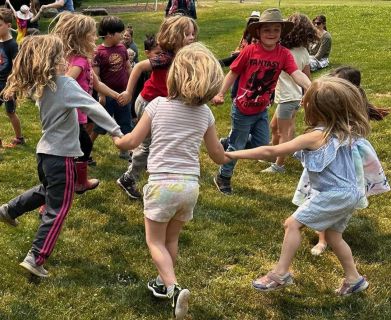
It’s no secret that kids love to play. When left to their own devices, kids can play all day in very creative ways. They make up stories, skits, games and songs. They immerse themselves in make-believe or lose themselves for hours in a book. Summer is an incubator of play, and there can be many unplanned moments of spontaneous play throughout the day. It’s a gift that cultivates joy. And, it’s also a critical pathway through which kids learn, grow, and develop into adults who can successfully navigate the world around them.
Child-directed play is important for social-emotional growth, developing social skills, and building strong friendships. It allows kids to explore social interactions in low risk situations. “Getting repeated feedback in a low-stakes environment is one of the main ways that play builds social skills”. When kids play together they learn to notice and interpret social cues, listen, take another person’s perspective, and share ideas and feelings in the process of negotiating and compromising. In his Ted Talk, The Decline of Play, psychologist Dr. Peter Gray further advocates for the importance of play. “Play is nature’s way of ensuring that …young human beings…acquire the skills that they need to develop successfully into adulthood”. When you allow your kids time for undirected play, they’re not only having fun, they’re cultivating tools that will support them in navigating life.
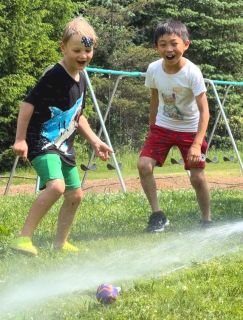 Watching a group of students playing in the sandbox, it is evident how play helps kids learn to collaborate. The kids will take on different roles. One digs channels with the shovel, and another gathers sand with a bucket. Some are in charge of detailing a structure, while others step back and plan the next expansion. When one student wants to change roles, they have to ask another to swap tools and positions. Sometimes changing roles requires negotiating how much longer each of them will continue in their current role before switching. If one doesn’t agree with another’s suggestion he or she might respond, “I don’t think that’s fair”, leading the others to consider what might feel fair to them. They nearly always find a compromise. In many ways, play is the antithesis of heavy social media use. The act of play places kids in situations where they are continually learning, connecting, increasing their empathy, trying new modes of social engagement, and have the time and space for observation and contemplation that help them process their social experiences.
Watching a group of students playing in the sandbox, it is evident how play helps kids learn to collaborate. The kids will take on different roles. One digs channels with the shovel, and another gathers sand with a bucket. Some are in charge of detailing a structure, while others step back and plan the next expansion. When one student wants to change roles, they have to ask another to swap tools and positions. Sometimes changing roles requires negotiating how much longer each of them will continue in their current role before switching. If one doesn’t agree with another’s suggestion he or she might respond, “I don’t think that’s fair”, leading the others to consider what might feel fair to them. They nearly always find a compromise. In many ways, play is the antithesis of heavy social media use. The act of play places kids in situations where they are continually learning, connecting, increasing their empathy, trying new modes of social engagement, and have the time and space for observation and contemplation that help them process their social experiences.
Free play also supports cognitive development, especially in younger children. It has been shown to increase neural connections in the brain (increasing pathways we use for critical thinking), build and strengthen the prefrontal cortex (the area of the brain responsible for decision-making, attention, problem-solving, impulse control, and planning), and support language skills. And while kids are playing, the absence of technology relieves the pressures of social media and actually helps kids sleep better. When humans view screens late at night they inevitably get less sleep, and they also lose out on the deep REM stage of sleep, which is critical for helping process and store events from the day into memory.
Today, our youth are spending less time engaging in self-directed play and more and more time on screens. A recent study found that in 2021, tweens (ages 8-12) spent about five and a half hours a day on screens, while teens (ages 13 to 18) spent about eight and a half hours a day on screens. Recent data released by the National Survey of Children’s Health found that in 2020 only 19.8% of school-aged children were physically active for at least one hour per day. How is this affecting our kids? And why is it essential to provide kids spaces where they can play and create together without the distractions of modern technology?
Social Media and Youth Mental Health
In 2007, Apple first released the iPhone and by 2012 had sold about 270 million units, equivalent to the population age 10 and older in the United States at that time. Translation - smartphones proliferated very quickly into modern society. And today there is a growing body of research that suggests heavy social media use is adversely impacting youth development.
According to Dr. Michael Rich, Associate Professor at Harvard Medical School, kids’ developing brains make it harder for them to limit their time on screens. Social media utilizes the same variable reward system that makes gambling so addictive. Unlike adults, a young person’s brain lacks a fully developed system of self-control to help them with stopping obsessive behavior. In a 2022 Pew Research Center study of American teenagers, 35% responded that they were using one of the top five social media platforms (YouTube, TikTok, Instagram, Snapchat, or Facebook) online “almost constantly”. And with the proliferation of smartphones and social media, rates of juvenile anxiety and depression have risen. From 2016 to 2020, researchers analyzing data from the National Survey of Children’s Health found that rates of anxiety and depression increased 29% and 27%, respectively, for children ages 3-17.
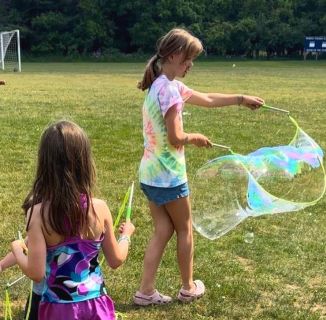 Dr. Jonathan Haidt, a social psychologist and Professor of Ethical Leadership at the NYU Stern School of Business, and Dr. Jean Twinge, Professor of Psychology at San Diego State University, have been compiling research about the links between social media and adolescent mental health. Through their work, they have found that many studies, using a variety of methods, suggest a strong link between heavy social media use and poor mental health, especially for girls.
Dr. Jonathan Haidt, a social psychologist and Professor of Ethical Leadership at the NYU Stern School of Business, and Dr. Jean Twinge, Professor of Psychology at San Diego State University, have been compiling research about the links between social media and adolescent mental health. Through their work, they have found that many studies, using a variety of methods, suggest a strong link between heavy social media use and poor mental health, especially for girls.
Haidt also notes that Instagram especially magnifies pressures for teens. “Social media—particularly Instagram, which displaces other forms of interaction among teens, puts the size of their friend group on public display, and subjects their physical appearance to the hard metrics of likes and comment counts—takes the worst parts of middle school and glossy women’s magazines and intensifies them”. Teens especially, can obsess over what they post on platforms like Instagram, “even when the app is not open, driving hours of obsessive thought, worry, and shame”.
Dr. Jenny Radesky, Assistant Professor at University of Michigan Medical School, focuses her research on the intersection of mobile technology and child development. Radesky (2018) surveyed a thorough study that suggests high-frequency digital media use is linked to an increase in new ADHD symptoms amongst teens, and researchers are also finding that heavy social media use leads to an increase in narcissistic behavior.
On a hopeful note, there is evidence that we get relief when we take a break from social media. Many experiments have shown that reducing or eliminating social media use for a week or more improves our mental health.
At Steiner, we understand that technology is a tool that our students will need in today's world. We recommend no technology for our youngest students and teach responsible use of it starting in middle school. Supporting this “slow-tech” approach, a break from technology has amazing value in helping kids understand and feel the benefits of spending time away from screens. As we end another school year and students have some much-needed free time, you might look for ways to preserve time for your children to play together without technology.
How Outdoor Learning Affects Students
A recent study focusing on children aged 5 to 18 revealed that outdoor education and activities have a multitude of benefits for students. Not only did students exhibit higher levels of self-confidence, stronger friendships, and a greater sense of belonging, but academic performance in math, science, and language also saw an improvement, coupled with increased motivation to learn. Waldorf education places significant value on diverse forms of outdoor learning and experiences, such as scientific observation and environmental projects, camping, field trips, and free exploratory play.
This article was originally published on Children & Nature Network.
Effects of regular classes in outdoor education settings: A systematic review on students' learning, social and health dimensions
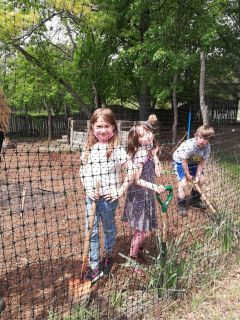
during a gardening class.
Regular classes in outdoor settings can promote students’ learning, health, social development, and concern for the environment
This systematic review of the literature was conducted (1) to identify studies about compulsory school- and curriculum-based outdoor education programs (OEPs) for students aged 5-18, (2) to categorize and evaluate outcomes, (3) to assess the methodological quality of the studies, and (4) to discuss possible benefits of such programs for students. The OEPs included in this review offered regular weekly or bi-weekly classes in a natural or cultural environment outside the classroom for at least four hours per week over a period of at least two months. In these programs, the outdoor learning was an embedded component of the school’s curriculum. Only studies reporting at least one student outcome and published in English- and German-language peer-reviewed journals were included.
Only thirteen studies met the inclusion criteria, indicating that the current state of research on OEPs is relatively small. The goals, participant groups, learning environments, methods used and reported outcomes differed widely across the programs. The methodological quality of the studies was, on average, moderate. Eight studies reported outcomes in terms of social dimensions, seven in learning dimensions, and four in additional outcomes. Two studies in the “additional outcomes” category reported on students’ physical activity, one on students’ mental health, one on action regulation behavior, and one on students’ environmental attitude and behavior.
Social outcomes included improved social competencies and social relations, such as self-esteem, self-confidence, trusting relationships, and the sense of belonging. Learning outcomes included improved academic performance in several subjects and improved skills in transferring the knowledge gained to real life situations. Two studies reporting learning outcomes also reported possible benefits relating to learning motivation. The research on physical activity, mental health and action regulation behavior was underrepresented in comparison to results in learning and social dimensions. The study reporting mental health outcomes found a significant decrease in mental health problems for boys but not for girls. One study reported growth in students’ self-confidence, leading them to take active responsibility for the environment.
The overall results of this review indicate that regular compulsory school- and curriculum-based OEPs can promote students’ social, academic, physical and psychological development. Further research is needed, however, to support what this review reports as “tendencies” in relation to the reported outcomes. The authors recommend more quasi-experimental and longitudinal studies with a greater number of participants and high methodological quality.
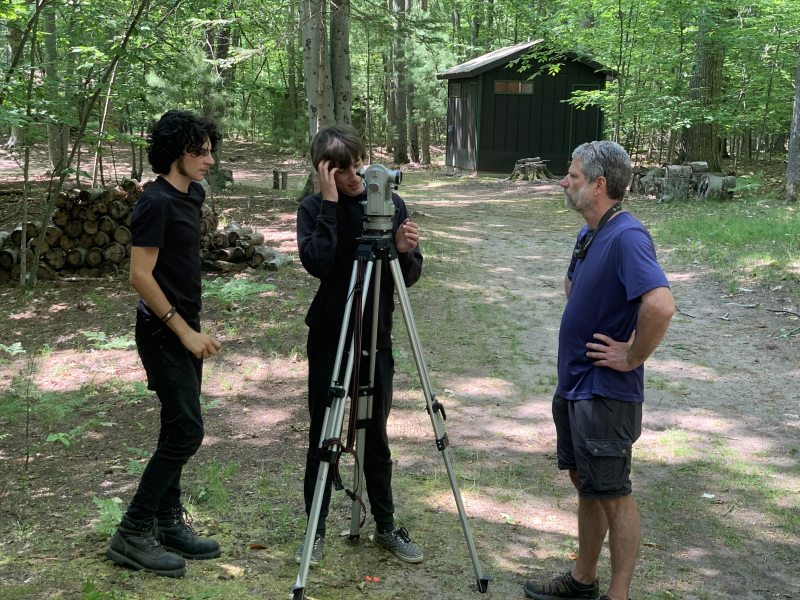
Adaptability Quotient: Educating for an Uncertain Future
With increasingly rapid changes in the nature of work, employers are interested not just in intelligence and social skills, but in an employee’s adaptability quotient–their ability to adjust to new challenges with flexibility, curiosity, courage, resilience, and problem-solving skills. In Waldorf education, we deepen rigorous academics by integrating art, outdoor education, music, theater, practical work, movement and hands-on learning. The depth and breadth of the Waldorf curriculum challenges students and develops crucial capacities that will help them adapt and thrive throughout their lives.
.jpg/Surpassing_Stem(1)__600x450.jpg)
This article was originally published Seb Murray on BBC.com
As workplaces change, is it enough to be smart? Enter AQ, the capacity to adapt that may well determine your future career success.
Once, if you wanted to assess how well someone might do climbing the career ladder, you might have considered asking them to take an IQ test. For years, it was thought that the intelligence quotient (IQ) test – which measures memory, analytical thinking and mathematical ability – was one of the best ways to predict our future job prospects.
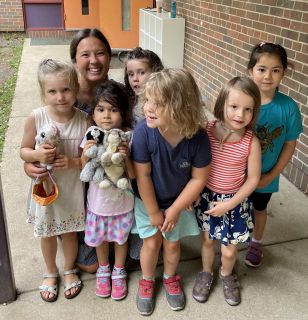 More recently, there has been increased attention on emotional intelligence (EQ), broadly characterized as a set of interpersonal, self-regulation and communication skills. EQ is now widely seen as a tool kit that plays an important role in helping us succeed in multiple aspects of life. Both IQ and EQ are considered important to our career success. But today, as technology redefines how we work, the skills we need to thrive in the job market are evolving too. Enter adaptability quotient, or AQ, a subjective set of qualities loosely defined as the ability to pivot and flourish in an environment of fast and frequent change.
More recently, there has been increased attention on emotional intelligence (EQ), broadly characterized as a set of interpersonal, self-regulation and communication skills. EQ is now widely seen as a tool kit that plays an important role in helping us succeed in multiple aspects of life. Both IQ and EQ are considered important to our career success. But today, as technology redefines how we work, the skills we need to thrive in the job market are evolving too. Enter adaptability quotient, or AQ, a subjective set of qualities loosely defined as the ability to pivot and flourish in an environment of fast and frequent change.
“IQ is the minimum you need to get a job, but AQ is how you will be successful over time,” says Natalie Fratto, a New York-based vice-president at Goldman Sachs who became interested in AQ when she was investing in tech start-ups. She has subsequently presented a popular TED talk on the subject. Fratto says AQ is not just the capacity to absorb new information, but the ability to work out what is relevant, to unlearn obsolete knowledge, overcome challenges, and to make a conscious effort to change. AQ involves flexibility, curiosity, courage, resilience and problem-solving skills too.
Amy Edmondson, a professor of leadership and management at Harvard Business School, says it is the breakneck speed of workplace change that will make AQ more valuable than IQ. Technology has vastly changed how many jobs are done, and the disruption will continue – over the next three years, 120 million people in the world’s 12 largest economies may need to be reskilled because of automation, according to a 2019 IBM study.
Any roles that involve spotting patterns in data – lawyers reviewing legal documents or doctors making a patient diagnosis, for example – are easy to automate, says Dave Coplin, CEO of The Envisioners, a UK-based technology consultancy. This is because an algorithm can do these tasks faster and more accurately than a human, he says. To avoid obsolescence, workers doing these jobs need to develop new skills like creativity to solve new problems, empathy to communicate better and accountability, using human intuition to supplement insight from machines. “If an algo can do 30% of the tasks that I used to do, what can I do with that spare capacity? The winners are those who choose to do things that algos can’t.”
 Edmondson says every profession will require adaptability and flexibility, from banking to the arts. Say you are an accountant. Your IQ gets you through the examinations to become qualified, then your EQ helps you connect with an interviewer, land a job and develop relationships with clients and colleagues. Then, when systems change or aspects of work are automated, you need AQ to accommodate this innovation and adapt to new ways of performing your role.
Edmondson says every profession will require adaptability and flexibility, from banking to the arts. Say you are an accountant. Your IQ gets you through the examinations to become qualified, then your EQ helps you connect with an interviewer, land a job and develop relationships with clients and colleagues. Then, when systems change or aspects of work are automated, you need AQ to accommodate this innovation and adapt to new ways of performing your role.
All three quotients are somewhat complementary, since they all help you to solve problems and therefore adapt, Edmondson says. An ideal candidate possesses all three, but not everyone does. “There are rigid geniuses,” she says. Having IQ, but no AQ would leave you struggling to embrace new ways of working using your existing skills – and low AQ makes it harder to acquire new ones.
AQ is now increasingly being sought at the hiring level. According to the IBM study, 5,670 executives globally rated behavioral skills as most critical for the workforce today, and chief among them was the “willingness to be flexible, agile and adaptable to change”. Will Gosling, Deloitte’s UK human capital consulting leader, says there’s no definitive method of measuring adaptability like an IQ test, but companies have woken up to AQ’s value and are changing their recruitment processes to help identify people who may be high in it.
Deloitte has started using immersive online simulations where job candidates are assessed on how well they adapt to potential workplace challenges; one assessment involves choosing how you would encourage reluctant colleagues to join a company triathlon team. Deloitte also looks to hire people who have shown they can perform in different functions, industries or geographies. “This proves they are agile and a fast learner,” Gosling says.
Fratto of Goldman Sachs, meanwhile, suggests three ways AQ might manifest in potential candidates: if they can picture possible versions of the future by asking “what if” questions, if they can unlearn information to challenge presumptions and if they enjoy exploration or seeking out new experiences.
She says this is not a definitive recipe for AQ, but recruiters should pose these kinds of questions to tease out evidence of AQ in candidates. In fact, she puts them to founders of start-ups seeking her investment.“Start-ups go through evolutions,” she explains. “It’s not like the founder has a written job description; they need some of a fluctuating list of 30 or 50 skills to be successful.”
One good thing about AQ is that – even if you can’t measure it – experts say you can work to develop it. Penny Locaso, the Australian founder ofBKindred, an education companythat helps people to become more adaptable, says some people have more curious or courageous personalities, which may explain why they are naturally better at adapting than others. “However, if one does not continue to surf the edge of their discomfort, the adaptability you are born with could decrease over time.”
She suggests three ways to boost your adaptability: first, limit distractions and learn to focus so you can determine what adaptations to make. Second, ask uncomfortable questions, like for a pay rise, to develop courage and normalize fear. Third, be curious about things that fascinate you by having more conversations rather than Googling the answer, something “which wires our brains to be lazy” and diminishes our ability to solve difficult challenges.
Otto Scharmer, a senior lecturer at the MIT Sloan School of Management who has written books on learning from the emerging future, suggests other methods. In a TED talk, he recommends remaining open to new possibilities, trying to see a situation through someone else’s eyes and reducing your ego so that you can feel comfortable with the unknown.
One thing we do know is that the workplaces of the future will operate differently. We may not all be comfortable with the pace of change – but we can prepare. As Edmondson says: “Learning to learn is mission critical. The ability to learn, change, grow, experiment will become far more important than subject expertise.”
School Trips as a Rite of Passage

Our 8th grade class recently returned from its annual class trip, a 10-day wilderness adventure in New England. This 8th grade trip is a rite of passage for students, the culmination of progressively longer and more adventurous excursions undertaken by the class teachers and students over the years.
At Rudolf Steiner School of Ann Arbor, we strongly believe these class trips are a vital part of the student experience. They foster a connection with the outdoors, offer opportunities for teamwork and class camaraderie, give some students an experience they might otherwise never have, and teach responsibility and self-knowledge. They also provide moments of joy, life-long memories, and shared experiences that further cement the bonds among the students.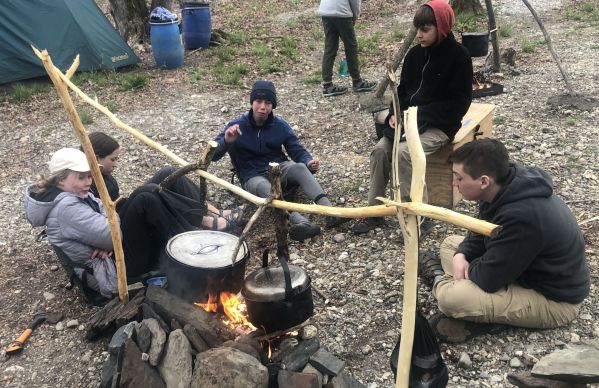
Typically, a class’s first overnight trip takes place in 3rd grade, where the class spends a night at a farm. This supplements the in-class work of 3rd grade, where students learn about farming, shelters, and ways people have lived and survived throughout history. By the time they reach middle school, the students have been on several overnight trips. In the middle grades, they spend a few nights in a dark-sky area as part of their astronomy studies and travel to Hocking Hills, Ohio, to further their lessons in mineralogy and geology.
The 8th grade trip is a wilderness adventure experience. RSSAA has generally used two organizations to help us with this experience: the Northwaters & Langskib camp based out of Temagami, Ontario or Kroka Expeditions, based out of Marlow, N.H. Each offers a program of canoeing and camping that challenges the students physically; requires them to work together to set up camp, cook food, clean dishes, take care of the canoes, etc.; and provides an opportunity for self-reflection, community sharing, and social and emotional growth. These trips are usually undertaken at the start of the school year, or even before the school year officially begins, as they are an excellent way to launch the class into their last year together before high school.
As an 8th grader teacher, I have experienced both the Northwaters and Kroka experiences — both were incredible and so important for my students. Last year, my class went to Kroka and paddled down the Battenkill River from Vermont to New York — the same path taken by this year’s group of 8th graders. My class enjoyed the challenges posed by canoeing along a swift-moving river — we had to navigate rapids, hairpin turns, fallen trees, lots of rocks, and ever-changing water depths. Despite the challenges, there is little to compare to the feeling of navigating your way down an isolated, scenic river, seeing birds and other wildlife on the shores, discovering the best place to pitch a tent, staring a fire and making food for your class, and chatting with friends by the fire as the stars emerge.
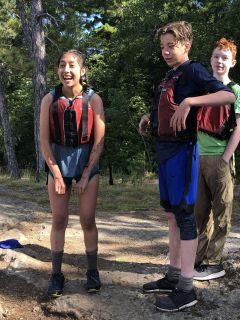 As is the intent of a rite of passage, when a class returns to school following these trips it is evident how much the students have grown, both as individuals who confronted and overcame their own personal challenges on the trip, and as a group who discovered strengths and vulnerabilities in their classmates they never knew before and who return with a shared experience that belongs only to them. Each year there is inevitably a student or two who do not want to take on the expected rigors of the trip, but upon return they are always glad they did and many say they now feel like they could accomplish anything!
As is the intent of a rite of passage, when a class returns to school following these trips it is evident how much the students have grown, both as individuals who confronted and overcame their own personal challenges on the trip, and as a group who discovered strengths and vulnerabilities in their classmates they never knew before and who return with a shared experience that belongs only to them. Each year there is inevitably a student or two who do not want to take on the expected rigors of the trip, but upon return they are always glad they did and many say they now feel like they could accomplish anything!
While the 8th grade trip is in many ways the culmination of these experiences in the grades and middle school, these types of trips continue for students at our high school. Ninth graders end their freshman year with a week at the Community Farm of Ann Arbor, while 10th graders take the knowledge they learned during their sophomore year for a week-long land surveying expedition at Camp Lookout on the northern shores of Lake Michigan. Seniors wrap up their RSSAA journey with two amazing adventures: a Zoology trip to Hermit Island, Maine, where they explore the flora and fauna of the ocean and tidal pools; and an adventure in Venice, Florence, and Rome, where they explore the artists, writers, and thinkers they learned about in the classroom for so many years.
These trips are a cherished and important part of our curriculum. I believe they play a central role in helping our graduates to be well-rounded citizens of the world, with the self-confidence to take off on their own life adventures.
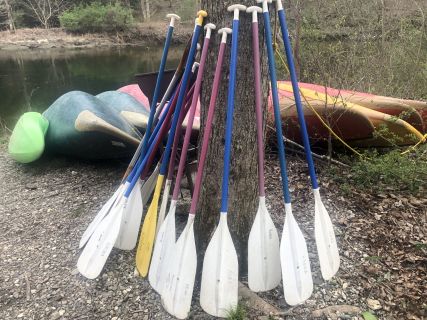
Is Travel Good For Teens?
Is it safe? Will they make good choices? What if something happens? Will they meet nice people?
These are just a few of the questions that might pop up when considering allowing your teen to travel - and they're all valid and worthy of discussion. But a question that might be even more important is, what will they learn? For parents, the educational aspect of travel is most likely the biggest reason why they send their kids on an overseas educational program with their school, like our senior trip to Italy. But what about travel with non-school groups - or even solo travel - for teens?

Traveling is the moment when the textbook comes alive, when everyday objects look completely different and when common greetings sound exotic. For teens, traveling abroad is exhilarating, stimulating, frustrating and—whether they're looking for it or not—extremely educational. Experts say that the educational benefit for teens goes far beyond learning historical facts, architectural styles, conversational phrases and even a working knowledge of a foreign subway system. Travel is an excellent way for students to develop the vital skills like critical thinking and problem solving that will enable them to compete in an increasingly globally interdependent economy.
“I think the biggest thing travel does for teens is to help them to see beyond their own somewhat limited world and to see how other people live,” says Christine Schelhas-Miller, who taught adolescent development at Cornell University for many years and is the co-author of Don’t Tell Me What to Do, Just Send Money: The Essential Parenting Guide to the College Years.
Travel is particularly good for developing critical thinking as it forces teens to examine their own values and beliefs from the perspective of a different culture. They become aware of aspects of their lives that they have taken for granted and never examined. - Christine Schelhas-Miller
Improvement in critical-thinking skills can translate into big gains in the classroom. Travel can help students develop all of what educators call the 4 Cs (critical thinking and problem solving, communication, collaboration, and creativity and innovation), says Dr. Jessie Voigts, who has a PhD in international education and runs wanderingeducators.com, a global community of educators sharing travel experiences.
“Travel encourages critical thinking (especially when comparing intercultural differences), problem solving (in so many ways—money, transportation, food, events, cultures, languages, etc.) and communication (both verbal and non-verbal, which is key to any communication event, globally),” says Voigts, author of Bringing the World Home: A Resource Guide to Raising Intercultural Kids. "It also encourages collaboration (working together with your travel partners or locals to fulfill your basic needs), creativity (finding a creative solution to a travel problem) and innovation (whether it’s a way to hold your luggage together with whatever is on hand or finding a new route in an unfamiliar town past a parade to get where you need to go).” And, through these experiences, teens are becoming more flexible and adaptable along the way, two more skills that are essential in the 21st Century’s virtual workplace.
Our kids face an entirely different world than that of their parents and grandparents. They need more than school and college to get a job. They need to learn flexibility, adaptability, and other skills to succeed in today’s global economy. Our coworkers and neighbors are no longer just next door, but all around the world.
Traveling—not just being a tourist, but smart travel—helps teens learn flexibility and adaptability, and creates an open-minded worldview that allows teens to work well with others anywhere in the world.” - Dr. Jessie Voigts
It may take teens—and their parents—some time to realize that they have gained all of these skills from their travels abroad. But it probably won’t take anyone long to figure out that these teens have learned a lot about something very close to home: themselves. Unexpected events always happen to travelers and, when faced with these events without an adult to guide them, teens develop problem-solving skills and confidence in their abilities to manage their lives. When teens travel, they expect to learn so much about the other country, but may also make some important self-discoveries along the way.

Some Life Benefits of Traveling as a Teenager:
- Learn How to Save and Budget Money - Sure, learning about money starts at a young age, but there is real-life experience and deferred gratification in saving up all school year for an extended trip that a teen can proudly say that they paid for. Plus there's the skill of budgeting throughout the trip.
- Ability to Make an Itinerary - Itineraries are just as dynamic as the places visited and this will reflect upon your teens travels no matter where they venture. They'll build flexibility when they need to make and change their itinerary so they can have the best experience possible.
- Build Problem-solving Skills - World travel wouldn’t be complete without the occasional bump in the road. Dealing with problems like pouring rain when the forecast predicted sun or a broken suitcase zipper will make them a savvy problem-solver as they work through predicaments proactively and positively rather than allowing them to spoil the trip.
- Become an Independent and Responsible Young Person - When traveling around with family and friends, it’s super easy to follow their lead and let others take care of things like tickets, transportation, meals, itineraries, etc. – The list goes on and on. Traveling without the familiarity of people from home means your teen will need to take more responsibility for their own actions, as well as look out for those they are with. This means showing up prepared, making the effort to participate, and being accountable throughout the trip.
- Break Stereotypes and Experience New Cultures - Unfortunately, people are often quick to believe stereotypes about other countries and their cultures, especially the negative ones. This is true of Americans' views of overseas destinations, as well as other countries negative perceptions of Americans. When traveling, your teen will have the opportunity to break this cycle by keeping an open mind and an open heart and sharing everything that it means to be a global citizen.
While every family and every teen is unique, when it comes to travel it's possible the pros outweigh any cons. Traveling teaches meaningful life skills, provides an opportunity to meet new people, facilitates cultural appreciation, and teaches the ability to adapt to new environments. Travel is a fantastic way of gaining these unique experiences which develop youth into more well-rounded citizens, all while having fun along the way!
Social & Emotional Heath

Social and emotional skills are vital for a child’s future, and in young children those skills are undergoing great expansion. The child lives in the present moment and in a world of wonder which can make social and behavioral obstacles challenging. Wonderful opportunities present themselves during the child’s time in the classroom and at home, and adults can help support learning while meeting the child at the developmental stage that he or she is in. This topic is at the heart of Waldorf education.
Parents often ask us about strategies and helpful approaches to navigating discipline and conflict. One of the most important aspects that we consider is how the child views him or herself and others.
It is easy to categorize things into good and bad, right and wrong; but human interactions and social relationships are much more complex than that.
Every human being has experienced times in which they have been unkind, insensitive or hurtful. It is in remembering these times and seeing the other person as a striving human being, that we can work through conflict and develop empathy for others. The last thing that we want is a child to begin to feel as though they are a bad person and unworthy of our love and care. One of the things we aim to foster is an environment of inclusivity and seeing others as equally important and valuable.
Each child enters a class with his or her own wonderful gifts and challenges and grows tremendously from what each classmate brings to the group. The world of play offers a child a stage to try on many hats which may manifest in various emotions, behaviors and roles. Children will often work out some social questions and conflicts that they are trying to comprehend through their play. Through observing children's play, adults are given a window into things the child is trying to figure out, which are often questions of morality. 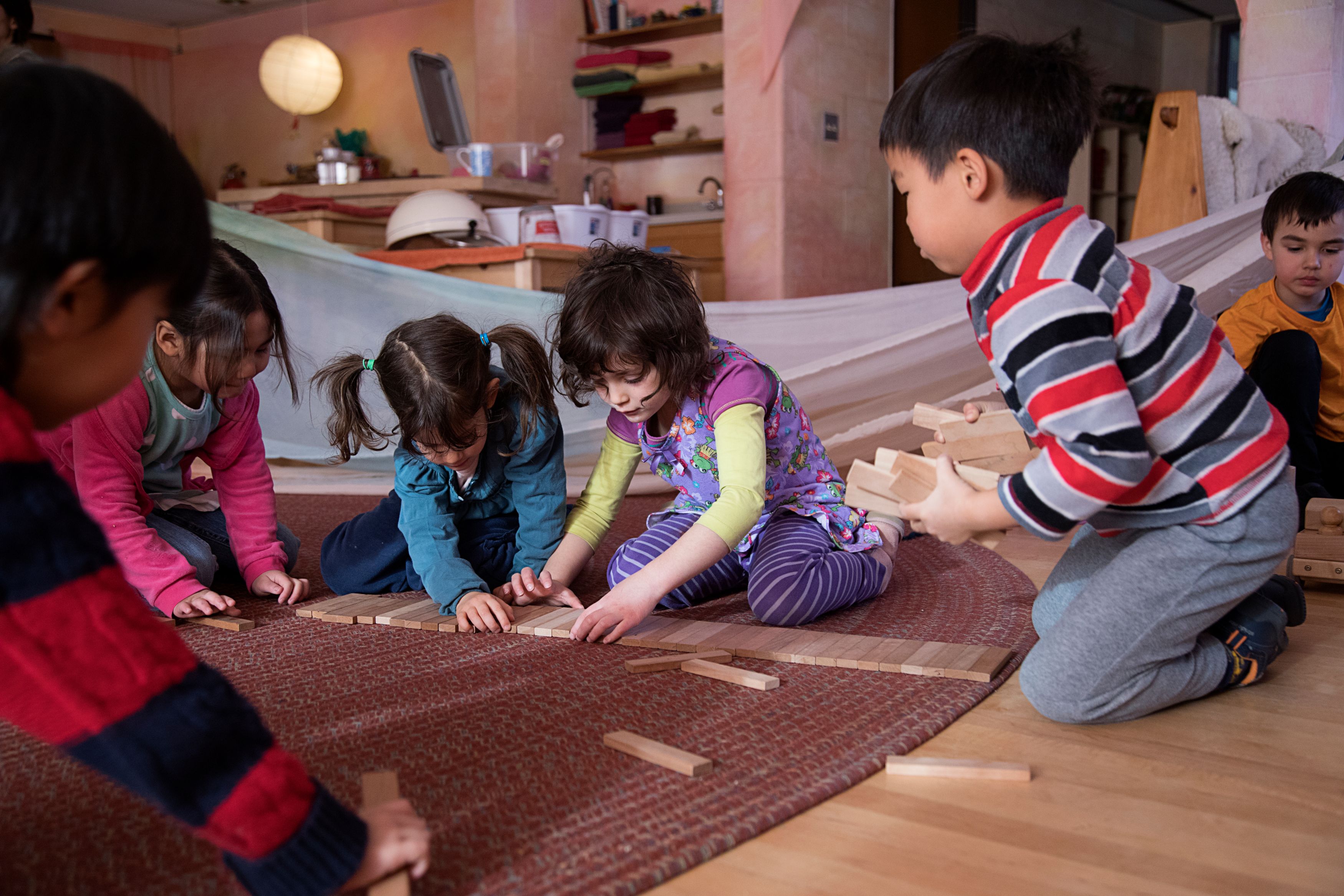
At RSSAA, children are encouraged to work challenges out first on their own to help them develop the foundation of lifelong communication and social skills. This is all done in the safety of a well-prepared and cared for classroom environment. The teacher works hard to maintain this environment while supporting the children in the class and the joys and struggles that they will experience together. At home, it is the same. The environment of family and the values that are set for how to treat one another allow the child a safe place to grow. Sibling interactions can sometimes be extremely difficult, but also tremendously rewarding. The same holds true for the interactions in the classroom.
The adult’s tone is important and should be relaxed and practical, stating observations or asking a needed question.
Approaching conflict without judgement can be one of the most difficult things for adults to do, especially when they clearly see a child do something unkind or hurtful. However, we have found that this is key to creating a space for growth to happen. By observing or sportscasting what you saw, without tones of judgement, a child can feel less defensive and better able to reveal the reasons behind their struggle. This can help take them out of the feelings of fight or flight and into a realm of learning and reflection. By speaking without judgement and describing another’s perspective of what happened, the children start to be able to see another person’s perspective, which in turn develops empathy.
Possible active observer statements:
I saw that Sally had it and Jim grabbed it
I have not heard you ask him for it
I see that Julie has many rocks and Jerry does not have any
Possible prompts:
You may ask him for a turn when he is done
You may talk to her first about that
When we have our coats on, we can go outside to play
When we are sitting and everyone is ready, we will pass the snack
Redirecting and engagement are great tools.
When situations are emotional, sometimes some breathing space and a shift of focus can make a world of difference. Redirecting the focus to a different activity with a child can shift the focus to practical work and engagement. Once the child is ready, the adult can invite other children to join. Often good work can bring two children together with a purposeful task and hard feelings start to dissolve. This could be all that was needed at the time to move past what happened, while other times the child may need this time to come to peace before bringing the conflict up in a way that they can talk about it. As the evening winds down it is easy to recap the day, acknowledging the areas you connected and the struggle that was had.
Acknowledging someone’s feelings can be powerful.
Whether a child is sad, angry or upset, stating that out loud gives the message to the child that you see that something is bothering them and can help them learn about identifying and coping with their emotions. Sometimes it is helpful to recognize the c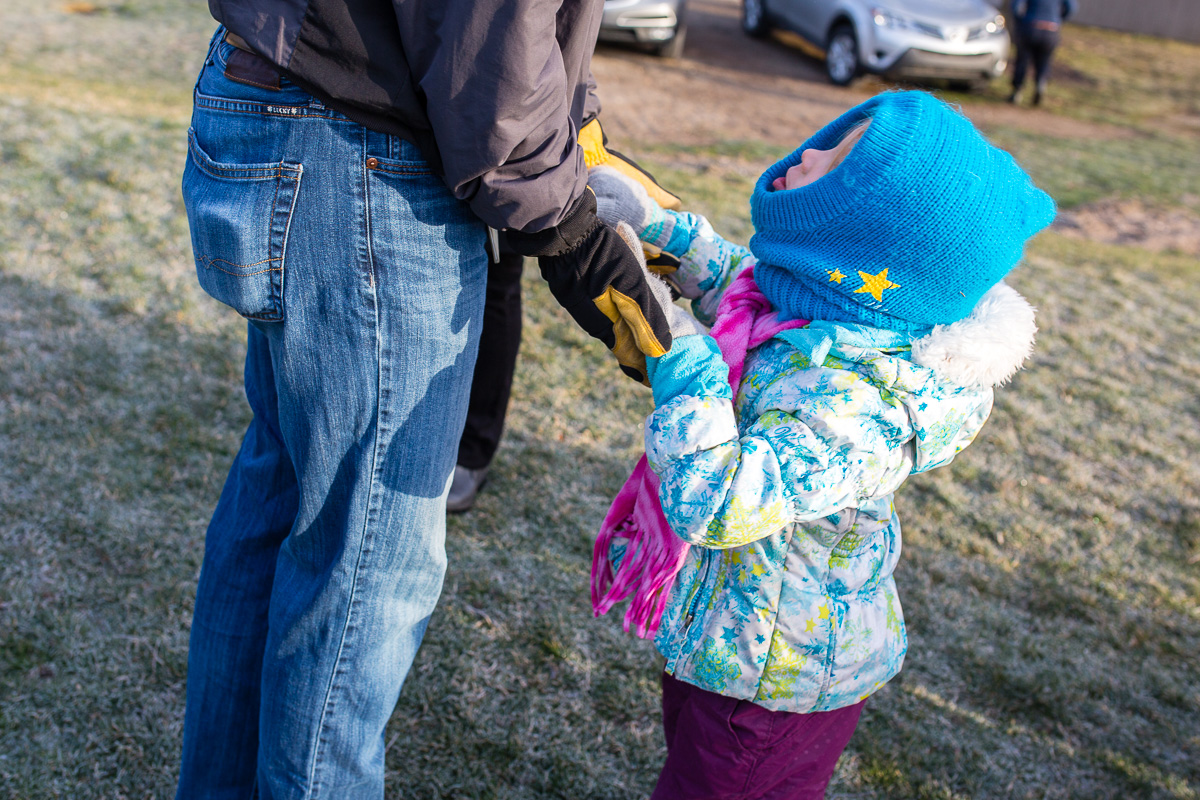 hild’s feelings simply before moving into practical ways to resolve the situation. An adult saying an acknowledging phrase helps the child feel connected to the adult or group. Here are some example phrases:
hild’s feelings simply before moving into practical ways to resolve the situation. An adult saying an acknowledging phrase helps the child feel connected to the adult or group. Here are some example phrases:
It looks like you are upset.
I’m sorry that happened.
That must have felt....
Reconnecting is key.
Showing that you care about a child in the moment of struggle lets them know that you still have a positive view of them and they are valuable. Reconnecting could be as simple as saying: “I know that you are such a kind and loving person. I remember how you found that beautiful rock the other day and brought it home for your brother. It’s okay to get mad, but we need to make sure no one gets hurt.”
Adults make mistakes too: let them see how you handle it!
It is important that the children can see that adults can make mistakes too, and that we are always trying to do our best. We work to be a model worthy of imitation, and that extends to our social interactions with the children and other adults. It is powerful for a child to see an adult make a mistake and then work to fix it, whether it be apologizing or having honest communication with someone.
It is ideal for the child to initiate resolution.
When children have a social conflict, it is ideal for the child to initiate resolution first. Ideally, they will grow the capacities and skills to navigate all the social and emotional struggles that will happen throughout their childhood and adult life. However, sometimes an adult is needed to help facilitate. This is one of the hardest things to get right. Once a teacher starts to see a pattern emerging then he/she moves towards more direct forms of interventions. Otherwise, simple redirection or a listening ear can be just the right tool. Not every moment needs to be talked about with an adult, and sometimes the children can come up with a compromise that is unfair in adult eyes but perfectly fair in theirs. Give them a minute (or a few) to try to figure things out, if it feels safe to do so.
Being accountable is an important thing to learn.
Taking accountability when someone does something wrong can be hard: no one wants to do something mean or wrong to those they love. Accountability without blame can be accomplished if we can help children to feel comfortable in a somewhat uncomfortable situation. Reminding in a firm but loving way that unkind words and actions can and do hurt. This can be truly recognized when the children can be brought together in a safe and productive way through meaningful activities.
Sometimes children need a break from one another in play.
S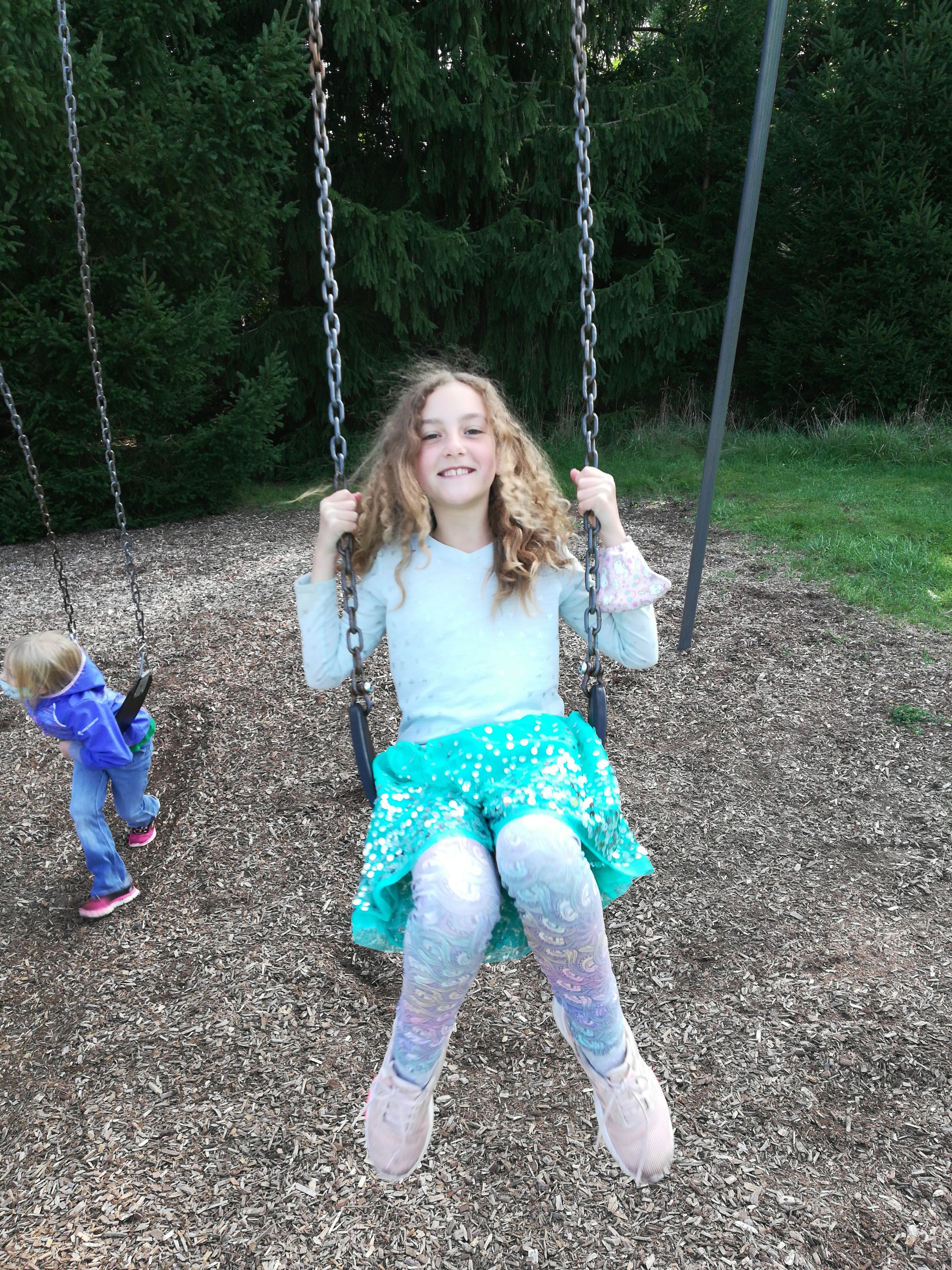 ometimes children can just be in a bad mood and that is okay. We can help their friends find other play options while giving the upset child room to have the quiet space they need to work things through. There are times that children can be purposefully exclusionary and in those situations we can say “We play with everyone”. Sometimes there are children at the stage where they can only play with one or two children at a time, and it's important that we help protect that space for them.
ometimes children can just be in a bad mood and that is okay. We can help their friends find other play options while giving the upset child room to have the quiet space they need to work things through. There are times that children can be purposefully exclusionary and in those situations we can say “We play with everyone”. Sometimes there are children at the stage where they can only play with one or two children at a time, and it's important that we help protect that space for them.
Therapeutic stories work wonders while bringing imagery to situations.
If a problem seems to be reoccurring or to have an underlying impulse, the teacher may decide to bring a therapeutic story to help the child move through the problem in an imaginative way without the child feeling the weight of his/her actions attached. Sometimes a story is told in the moment, where other times it is told to the group many days in a row or sent home with a child to be read before bedtime. This can be easily done at home. They can be stories of animals, little boys and girls or even stories of you as a child. Author Susan Perrow has an amazing collection of already written tales for various behaviors such as: grief, hitting, grumpy moods, or being shy.
An apology should not be forced.
Instead of forcing an apology that is not heartfelt, modeling caring behavior and inviting a child to participate in it can help facilitate healing between children. A child can help fetch a bandage or ice pack, or possibly rub the other child’s back or offer a hug. Depending on the situation, a teacher might give verbal prompts such as “Sometimes if I hurt someone by accident, I say ‘I am sorry, I didn’t mean to do hurt you. It was an accident.’” A child may choose to try a verbal apology or not, but either way the hurt child is helped by this.
Nourishing the physical body.
If a child gets a bump or bruise, a deep breath, a drink of water or bite of food can do wonders. Also, braiding or combing hair, applying lotion or a little massage can bring a child back into their body and help them feel well cared for. Possible tools we can use for comfort are: ice pack, essential oils, rescue remedy, cream, and a bandage.
Adult Reflection
It is important for the adult to later process and reflect on challenging situations in order to get a bigger sense of what happened and what is happening. Tracing the steps backwards to what lead to the issue can help the adult find the catalyst and that can help them avoid the situations in the future.
